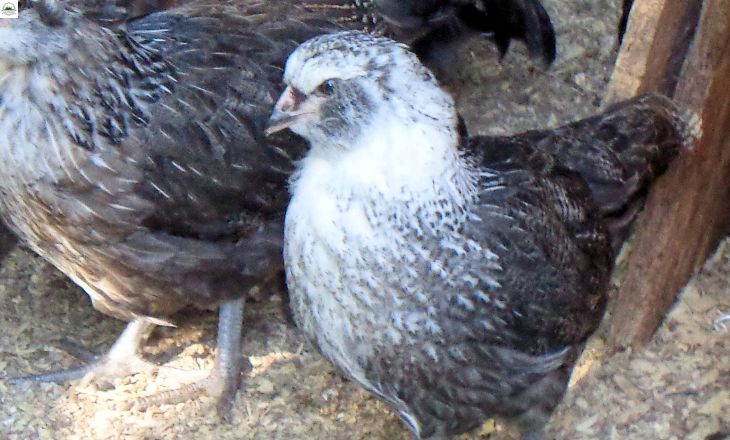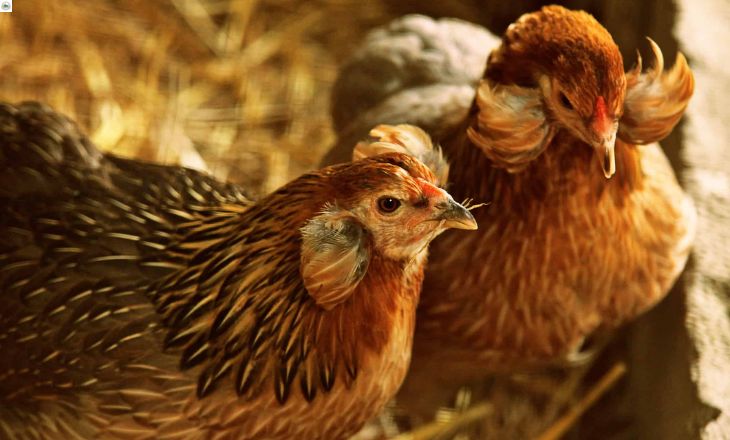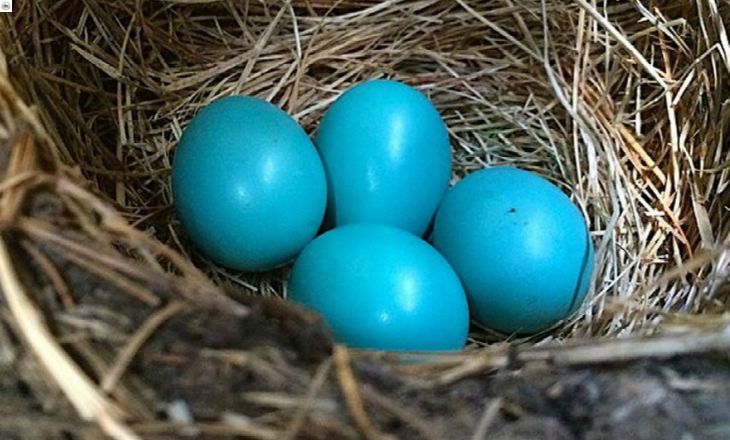Imagine finding a hidden treasure in your backyard: a bright blue egg that looks like it belongs in an artist’s palette instead of a chicken coop. While most eggs are white or brown, blue eggs come from special chicken breeds that add color and character to your flock. If you’re curious about these colorful eggs, you’re in for a treat.
This article will explore What Chickens Lay Blue Eggs, their origins, personalities, and care needs. Each breed brings something unique, from the friendly Araucana to the striking Ameraucana.
They brighten up your breakfast table with their beautiful shells and offer all the benefits of regular chickens. If you want to add color to your poultry hobby or farm, keep reading to discover which chickens can help you discover these lovely blue eggs!
What Chickens Lay Blue Eggs – Key Takeaways
- Adding blue egg layers to your flock will give you a variety of eggs and add colourful eggs to your daily collection.
- The colourful eggs taste the same as white and brown eggs. The eggshell colour doesn’t affect the flavour, but the chicken’s diet affects the egg’s taste and quality.
Blue Egg Laying Chickens
Blue egg-laying chickens like the Araucana, Ameraucana, and Cream Legbar are popular for their colorful eggs and friendly nature. These strong hens are perfect for hobby farms and backyards.
Their blue eggs come from a genetic change that affects the shell color, making breakfast more exciting. Blue eggs are as nutritious as brown or white eggs, packed with protein and vitamins. They have slightly thicker shells, which is great for baking.
Owning blue eggers can lead to conversations about sustainability and local farming. These heritage breeds require fewer resources than commercial layers, showing that egg production can be eco-friendly.
These chickens can inspire interest in caring for poultry and breeding. Enthusiasts can try cross-breeding different blue egg layers or learn about poultry genetics, boosting their knowledge while adding vibrant colors to their coop.
Discovering Chickens with Unique Egg Colors
Araucana chickens lay blue eggs, while Ameraucana chickens lay blue or green eggs. Olive Egger chickens lay olive-coloured eggs, a mix of dark brown and blue egg genetics. These unique egg colours make egg collecting more exciting and highlight the beauty of different chicken breeds.
Introduction to Blue Egg Layers
Blue egg layers are a fun addition to your flock. These chickens have a genetic history from South America, where blue eggs were seen as lucky and a sign of fertility. Knowing this background helps us appreciate these breeds and their cultural significance.
The Most Common Blue Chicken Breeds
Discover popular blue chicken breeds! Learn about the most commonly raised and admired blue-hued poultry breeds. Colourful egg-laying chickens are practical and joyful, making egg collecting fun. Their vibrant eggs showcase the beauty and diversity of nature.
1: Ameraucana Chicken
Ameraucana chickens were standardized in 1984. This special breed is known for its pretty blue eggs, making it a great choice for backyard chicken owners. These chickens have a unique look with fluffy cheeks and beautiful feathers, making them a nice addition to any coop.
Ameraucanas are friendly and easy to get along with, making them good companions in a group of chickens. One interesting thing about Ameraucanas is that they are good at finding food on their own, which helps them do well in open areas.

They can adapt to different places and weather conditions, making them versatile birds that can live in many areas. Besides laying eggs, Ameraucanas are fun and social, making them a lively addition to any backyard.
2: Araucana Chicken
The Araucana chicken is popular for laying blue eggs and has a unique history. Originally from South America, it was bred by the Mapuche tribe in Chile. It has tufts of feathers on its cheeks and earlobes, making it stand out. The Araucana is known for being tough and able to live in different climates. They are friendly and have quirky personalities, making them great for backyard flocks.

3: Lushi Chicken
The Lushi chicken is a small breed from China known for its unique size. Unlike more giant chickens, the Lushi chicken only grows to a maximum weight of three pounds. Although they don’t lay many eggs, the eggs they produce are of high quality.

The scarcity of their eggs adds to their appeal, making each one precious. Collecting a small clutch of blue and pink eggs from chickens is a reminder to appreciate life’s simple pleasures.
4: Cream Legbar
Cream Legbars are a special type of chicken that lays blue eggs. These eggs are unique and make them stand out from other chickens. People find the blue eggs interesting and attractive. Cream Legbars are friendly and curious birds, which makes them popular for backyard flocks. They have a nice appearance with crests and sleek bodies, making them a favorite choice for people who want beautiful and useful chickens.

5: Whiting True Blue
Whiting True Blue chickens lay unique blue eggs popular among backyard chicken fans. These eggs are pretty and have the same nutrition as regular white or brown eggs. The blue color comes from a special gene that affects pigment deposits on the eggshell. This makes Whiting True Blue chickens stand out from other breeds, making them a desirable choice for any flock.

Whether you’re a seasoned chicken keeper or new to raising poultry, having a few Whiting True Blue hens can enhance your egg collection with their beautiful and distinct eggs.
6: Arkansas Blue
The Arkansas Blue chicken is rare and known for its unique blue eggs. These chickens have black feathers and red accents on their faces. They are gentle and tough birds, popular with backyard chicken fans. The Arkansas Blue lays blue eggs, which is unusual and eye-catching. The dark bird laying colorful eggs is visually striking.

Arkansas Blue to your flock can bring novelty and wonder to your life, whether you are experienced or new to raising chickens.
Summary of Six Blue Chicken Breeds
| Number | Breed or Hybrid | Lifespan |
| 1 | Ameraucana | 7 – 8 yrs |
| 2 | Araucana | 5-8 years |
| 3 | Lushi | 18 to 24 months old |
| 4 | Cream Legbar | 5-10 years |
| 5 | Arkansas Blue | 6-8 years |
Unravelling the Mystery of Blue Chicken Eggs
Some chicken breeds lay blue eggs, which are rare and valued by egg fans. Araucanas and Ameraucanas are known for laying these eggs because of their genes. Genetics determine egg colour and other traits in chicken breeds. Understanding this process adds to appreciating nature’s creations, like blue chicken eggs.
How Are Blue Eggs Formed?
The colour comes from oocyanin, which gives these eggs their unique hue. Unlike brown eggs, oocyanin comes from bile and colours the whole shell. This natural process makes blue eggs different and exciting.

Common Myths About Blue Eggs Debunked
Many people think blue eggs are unique, but the colour of the shell doesn’t change the taste or nutrition. The hen’s diet and health affect the egg’s nutrients, not the shell colour. All coloured eggs have the same protein and healthy fats. Buying eggs from well-treated hens with a good diet is essential, no matter the shell colour.
The Rich History of Chickens That Lay Blue Eggs
Araucana chickens from Chile lay blue eggs, which people find interesting. These chickens have a gene that makes their eggs blue, which is different from other chickens. The gene has been kept through selective breeding. Araucana chickens are essential in the Araucania region and are part of local traditions.
When Araucanas breed with other chickens, their offspring usually lay eggs with a blue tint. True Araucanas are rare and are typically found through dedicated breeders, not in hatchery catalogues. The genetics of Araucana chickens determine their blue eggs.
This trait has been passed down through careful breeding and genetic selection in each new generation of chickens.
Aromas and Tastes – Do Blue Eggs Differ?
Blue eggs look beautiful and make people wonder about their taste and nutrition. But the colour of the eggshell doesn’t affect the inside. What an egg tastes, and its nutrients depend on what the hen eats and how it lives. Some people think blue eggs taste a little better or have a creamier texture than white or brown eggs.
Comparing Nutritional Value and Taste
The bright blue eggshell stands out and makes us curious. It looks different from regular eggs, making us wonder about its taste and nutrition. Blue eggs excite us for a unique cooking experience compared to brown or white eggs.
The colour of an eggshell shows extra nutrients, and studies suggest blue eggs may have more omega-3 fatty acids. This unique nutrient mix could affect these eggs’ taste and health benefits, making them more enjoyable.
Easter Eggers – The Popular Choice for Colorful Eggs
Easter eggs are famous among people who raise chickens at home because they lay colourful eggs. These birds come in different colours like blue, green, pink, and brown, making egg collection fun. Easter eggs are unique because they have diverse genes, which means their eggs are vibrant and surprising. Besides their colourful eggs, Easter Eggers are friendly and robust, making them a good choice for any chicken group.
The Surprise in Every Egg: Not Always Blue!
Finding surprises in eggs is like a treasure hunt. Eggs come in various colours, from white and brown to soft pastels and bright speckles. The colours of eggs can tell us about the hen that laid them. Different breeds of hens lay eggs with other colours, adding diversity to agriculture.
Olive Eggers – Unique and Varied Hues
Olive Eggers are famous chickens with various green colours. They come from breeding blue and dark brown egg layers, resulting in unique greenish hues. One particular thing about Olive Eggers is that their egg colours are unpredictable. Each chicken may lay eggs in shades of green, which is exciting for egg collectors.
Araucana chickens lay olive green eggs with bright yellow yolks. The eggs are eye-catching and make people curious.
Rare and Attractive: The Cream Legbar Chicken
The Cream Legbar chicken is a rare breed with barred feathers and lays sky-blue eggs, making it popular among chicken fans.
These birds are visually appealing and good at finding food, making them an excellent choice for backyard flocks. The Cream Legbar can determine the gender of chicks based on their feather patterns, which is helpful for breeders wanting female chicks for egg-laying.
Autosexing for Easy Flock Management
The Cream Legbar chicken has a unique trait called autosexing. This helps breeders distinguish between male and female chicks when young, saving time and preventing breeding and flock management errors.
The autosexing trait is helpful for both experienced breeders and beginners. It simplifies the breeding process and is attractive to hobbyists and those seeking self-sufficiency. This trait is essential for maintaining healthy and prosperous flocks.
Adding Cream Legbars for a Touch of Rarity
Cream Legbars are eye-catching chickens with creamy feathers and a distinct crest. They lay beautiful blue eggs, adding colour to your egg basket. Each hen is unique genetically, making them valuable for breeders and collectors. They have friendly and curious personalities, becoming favourites in your flock and bringing joy to your daily interactions.
Raising Blue Egg Layers
Raising chickens that lay blue eggs can be fun and fulfilling. To help them lay good eggs, feed them a diet rich in protein and calcium. You can also give them omega-3 fatty acids for more blue eggs. Keeping the chickens calm is essential for their health and egg production.
You can enjoy their beautiful eggs and have healthy, happy blue egg-laying chickens by caring for and feeding them well.
Benefits of Adding Blue Egg Chickens to Your Flock
Adding blue egg chickens to your flock can change how it looks and functions. These unique birds lay pretty blue eggs and, with their striking appearance, bring variety to your flock.
Blue egg layers are calm, get along with other chickens, and are good at finding their food, which helps control bugs without needing extra food. They are strong and can resist common diseases, reducing the need for costly vet care and problems for your flock.
Care Tips for Healthy Blue Egg-Producing Chickens
To keep your blue egg layers healthy and productive, provide a well-ventilated coop with nesting boxes for safety and comfort. Feed them high-quality food rich in calcium and protein to support egg production and overall health. Allowing them to roam freely and forage for food promotes natural behaviour and results in more nutritious eggs.
- Make sure to consume a well-rounded diet packed with essential nutrients to support the healthy production of eggs.
- Offer a generous outdoor area for chickens to participate in natural foraging activities.
- Build sturdy and comfortable enclosures to shield your birds from harsh weather and potential threats.
By taking good care of your chickens, you ensure they stay healthy and happy and set the stage for a rewarding and long-lasting hobby. Everything from feeding and giving them enough space to keeping their living area clean and safe contributes to their overall well-being.
From Araucana to Ameraucana: Understanding the Genetics
The Araucana and Ameraucana chickens are famous for their blue eggs and unique looks. Their genetics show how different genes work together to create these unique traits. The Araucana breed from Chile has the gene for blue eggs. This gene can also be linked to harmful genes that may reduce fertility and hatchability.
| Feature | Araucana | Ameraucana |
| Egg Color | Blue | Blue |
| Body Type | Rumpless | Fuller Body |
| Facial Attributes | Feather Tufts | Muffs and Beards |
| Breed Recognition | Not Standardized in All Regions | Recognized by the American Poultry Association |
Conclusion
We searched for chickens. What Chickens Lay Blue Eggs? Scientists have discovered why some chickens lay blue eggs by studying genetics and breed characteristics. The Araucana and Ameraucana breeds are known for their blue eggs; diet and environment can also affect egg color.
Understanding how eggshells get their color helps us appreciate the different types of chickens and their egg-laying abilities. Recognizing the unique traits of chickens that lay blue eggs can help us better understand and enjoy nature. When you see blue eggs at the store, remember their incredible story and think about supporting local farmers who raise these unique chickens.
Unlock the key to caring for Buff Orpington chickens with our comprehensive guide. Everything you need to know in one place!
Frequently Asked Question
Which Chickens Lay Blue Eggs UK?
Araucana, Cream Legbar, and Ameraucana are known for laying blue eggs in the UK.
What Is The Rarest Color Of Chicken Egg?
The rarest color chicken egg is believed to be a shade of robin’s egg blue, commonly laid by Araucana or Ameraucana chickens.
Can A Chicken Lay 2 Eggs In A Day?
No, a chicken typically lays only one egg per day.

